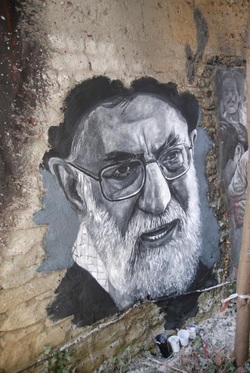| |  Even in an age saturated with instant information, recent earthquakes in Iran have been buried. There are sound journalistic reasons for this. North Korea’s bellicose young leader, Kim Jong-Un, has been hogging a lot of oxygen with his threats of nuclear attacks against Western interests. And the horrific bombing at the Boston Marathon gave a laser-like focus to public attention. Real death and threats of imminent death have a way of doing that. But the earthquakes had the potential to perhaps rival a nuclear attack, thanks to Iran’s rickety nuclear energy reactor. |
| | Iran’s first earthquake, measuring 6.3 in magnitude on April 9, was centered within 100 miles of this reactor, in Bushehr. Had it seriously compromised the facility, the world probably would know by now. Bushehr is closer to Kuwait City, Doha and Dubai than to Tehran. But the lack of a Chernobyl-like nuclear cloud doesn’t give much comfort to scientists around the world, or to Salt Lake’s own Khosrow Semnani. A Utah resident who came here from Iran in the 1960s and amassed a fortune largely by starting a company that handled radioactive waste materials (which he since has sold and now is known as EnergySolutions), Semnani has a passion about his former home. He has siblings and other family members still living there. He also made a name for himself recently by publishing a report that used science and best evidence to put a human toll on the costs of a U.S. military strike on Iran. Titled, “The Ayatollah’s Nuclear Gamble,” the report was featured in this column as well as by Time Magazine, the New York Times and several prominent foreign publications. Now, as he explained to me this week, Semnani worries the United States may be so focused on keeping Iran from obtaining nuclear weapons that it isn’t focused enough on its nuclear energy facilities. Consider that Iran is the only nuclear nation that is not part of the Convention on Nuclear Safety negotiated after the Chernobyl disaster. Its facilities are still mainly watched over by Iran’s own inspectors, who are more beholden to the nation’s rulers than to independent science. Consider, too, that construction of the Bushehr facility began more than 40 years ago and was built over time using parts from Germany, Russia and Iran. A report last week in Foreign Policy magazine referred to it as “a virtual petri dish of amalgamated equipment and antiquated technology.” Because it was thrown together with such widely divergent parts, “Iran cannot benefit from other countries’ safety experiences.” Iran’s closed regime is mostly unwelcoming to such experience, anyway. And just as important as the safety of its Bushehr reactor is Iran’s inability to deal with large-scale disasters. Foreign Policy compares a 6.6 magnitude quake in Iran in 2003, in which 26,000 people died and 85 percent of the buildings and infrastructure in the city of Bam were destroyed, to a 6.5 quake in San Simeon, Calif., that same year. Only three people died and 40 buildings were damaged in that one. Semnani brings it home with comparisons to Chernobyl where, he reminds me, some areas remain uninhabitable 27 years later and may be for another 20,000 years. Imagine, he says, what would happen if prevailing winds carried radiation to the sparkling hub of commerce in Dubai or other oil-rich areas of the Gulf. People in that region already are imagining, which is why those nations convened an emergency meeting of the Gulf Cooperation Council last week in Riyadh. Some people are quick to note that nuclear reactors tend to fare well in earthquakes. The Fukushima meltdown in Japan was due to a tsunami, not the earthquake itself. This is correct, except that the safety of the Bushehr reactor is such a mystery. Bushehr sits on the junction of three tectonic plates. Americans are right to worry about Iran’s intent with regard to weapons. But both Mother Nature and human error may be a bigger concern. At the least, the Obama administration should be as concerned about getting Iran to cooperate with the International Atomic Energy Agency as it is about it making bombs. |

 RSS Feed
RSS Feed

